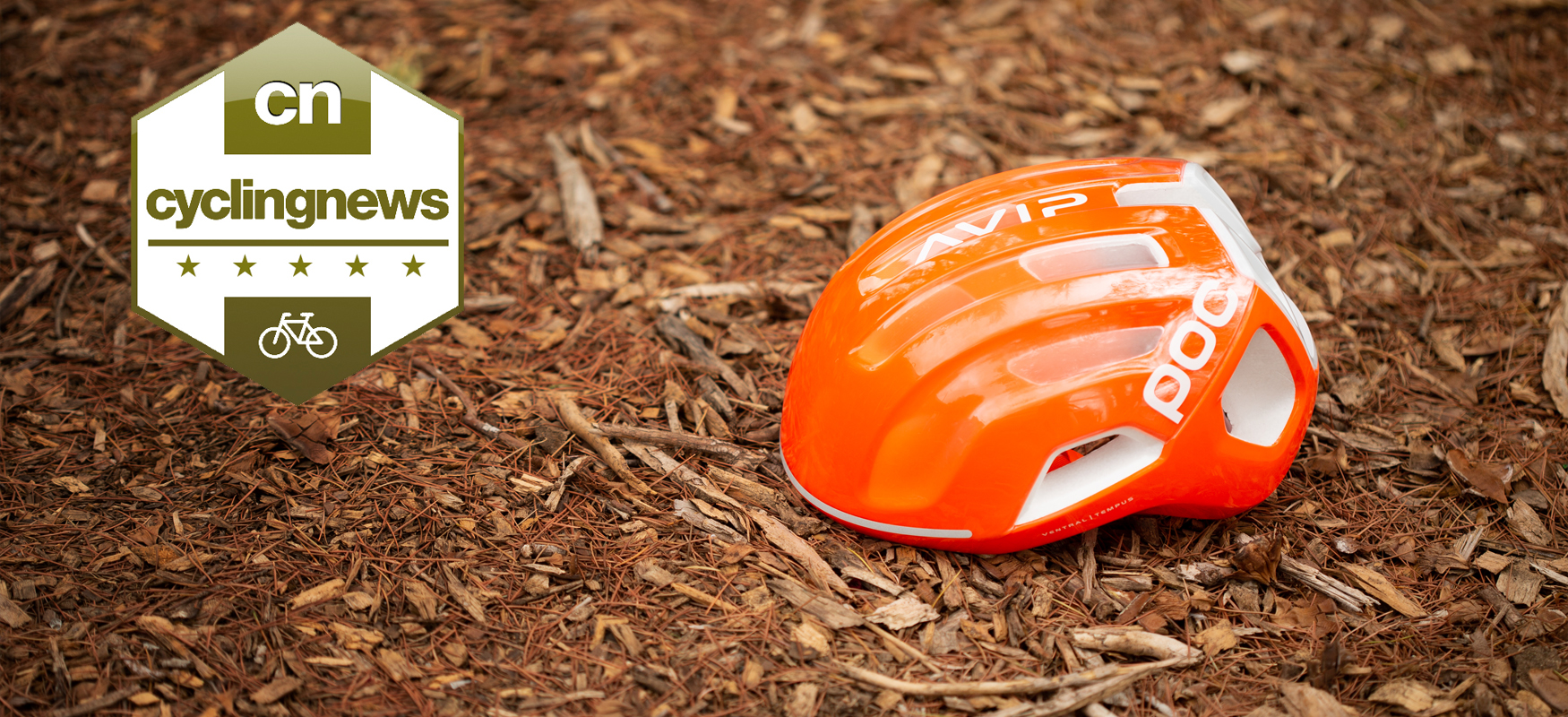Cyclingnews Verdict
The POC Ventral Tempus Spin isn't super versatile but it's good at what it does, and that's wet weather riding. If you ride in the rain a lot, then it's well worth investing in a second helmet specifically designed for the task
Pros
- +
AVIP Orange is super visible in low-light conditions
- +
Easy To Clean
- +
Replaceable padding
- +
Spin rotational impact protection
Cons
- -
Not a versatile product
- -
Rear cradle is difficult to move vertically
You can trust Cyclingnews
If this is your first introduction to the POC Ventral Tempus Spin, you might find yourself wondering if it's really necessary to design a helmet specifically for riding in the rain. So first let's delve into why it exists in the first place.
The UCI regulations that govern the best road bike helmets is a short list of what's allowed and what's not. First on the list is the statement "Adding a removable cover is not allowed..." and a few lines below that you'll find "No material of any kind may be added to the helmet (tape, surface treatments, etc.)." It's because of these two small lines in a long list of rules for the very top level of cycling that the POC Ventral Tempus Spin was created.
It's a very specific helmet borne out of a very specific racing rule. It is a potential contender for our list of the best aero helmets, but since it might also be the perfect option to add to your cold-weather repertoire, could it even find its way onto our best commuter helmets buying guide?
Keep reading to see our thoughts on how it works for those of us not racing in the grand tours.
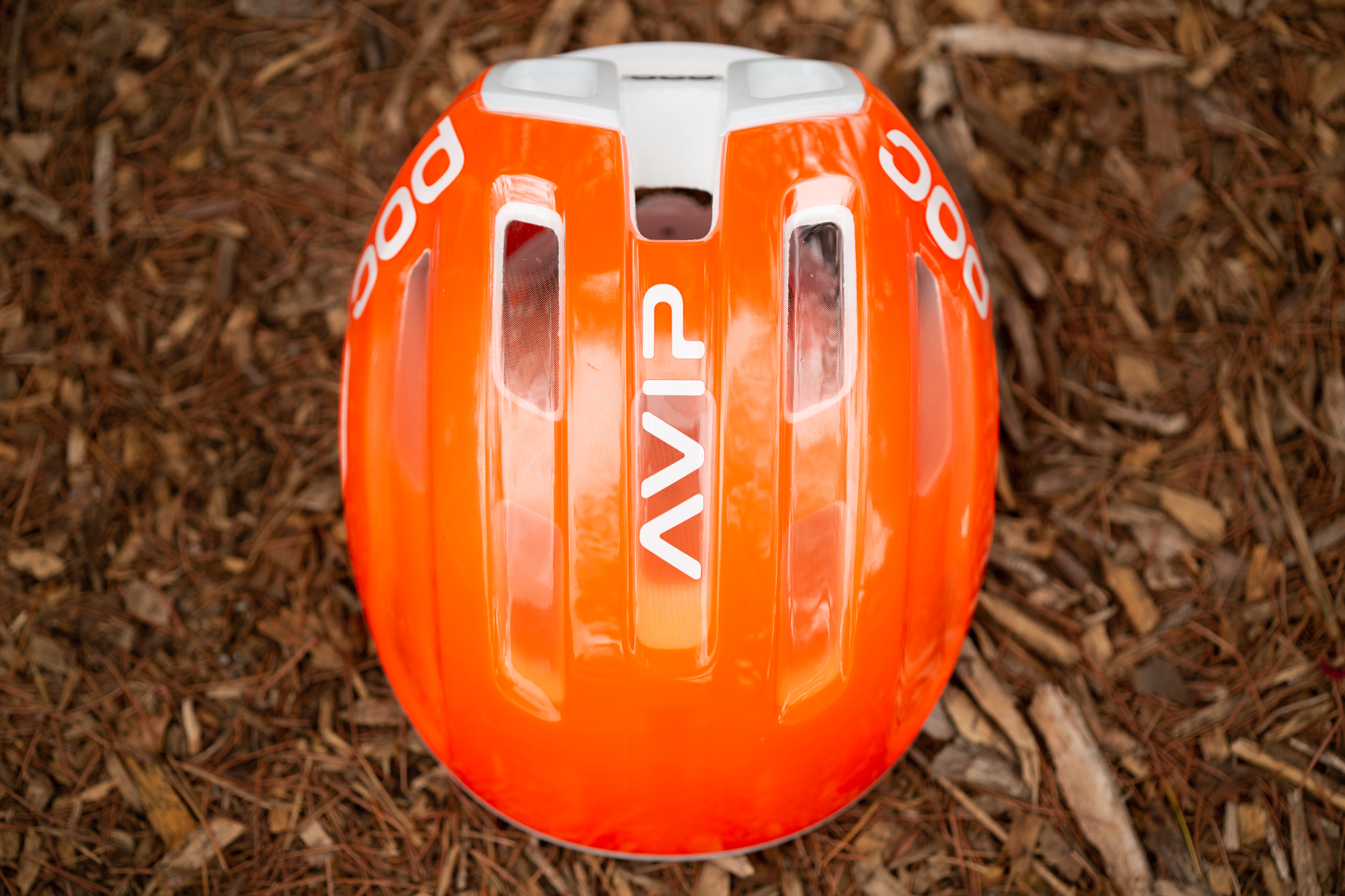
Design and aesthetics
The base of the POC Ventral Tempus Spin is the Ventral Air Spin used by EF Education-Nippo. They aren't just similar; they are the same helmet with the only substantial difference being a non-removable shell on the Tempus. With that understanding, it's not a negative.
The original Ventral Air Spin is a reasonably lightweight helmet with a claimed weight of 265g for size medium. Part of that lightweight design is a lack of material because of how ventilated the Air Spin is. A total of twenty vents keeps it well ventilated but also lightweight. With the Tempus Spin, those vents are still there and they still keep the helmet weight down.
The difference is that in this incarnation the vents don't ventilate anymore. Instead of being open to let heat out and air in, the Ventus features a permanently bonded shell that covers the top and front vents. It's a 40-gram piece of plastic that keeps the rain out, the heat in, and does it all while satisfying UCI rules.
There are still eight vents left uncovered, clustered in the back, which handle exhaust and allow hot air to flow out of the helmet without letting rain in. Meanwhile, under the front brim, you'll find three large vents that keep the air flowing across your head before exiting at the rear. There are also a couple of vents on the side, but given the airflow around the helmet they aren't major players in the system.
Inside the Ventral Tempus SPIN is a lightweight retention system along with replaceable padding and the POC take on rotational impact protection. Starting with the retention system it's a fully plastic, no wire, cradle that rings the bottom edge of the EPS. At the rear, you'll find a dial to snug up the fit both horizontally and vertically, though I found the latter to be a bit of a struggle to adjust. On top of the plastic cradle is a comfortable system of light blue pads.
Move to the outside of the helmet and you'll find the rain-specific shell, but also a blindingly bright Zinc Orange AVIP colour. AVIP stands for 'Attention, Visibility, Interaction, and Protection', and it's a collection of products with those core principles as a guiding light. The orange colour is one of the core parts of POC AVIP products, and given that this is a rain-specific helmet, low light environments are a likelihood, so the zinc orange should help. There's also a strip of reflective material across the front at the brow and in the back below the exhaust vents.
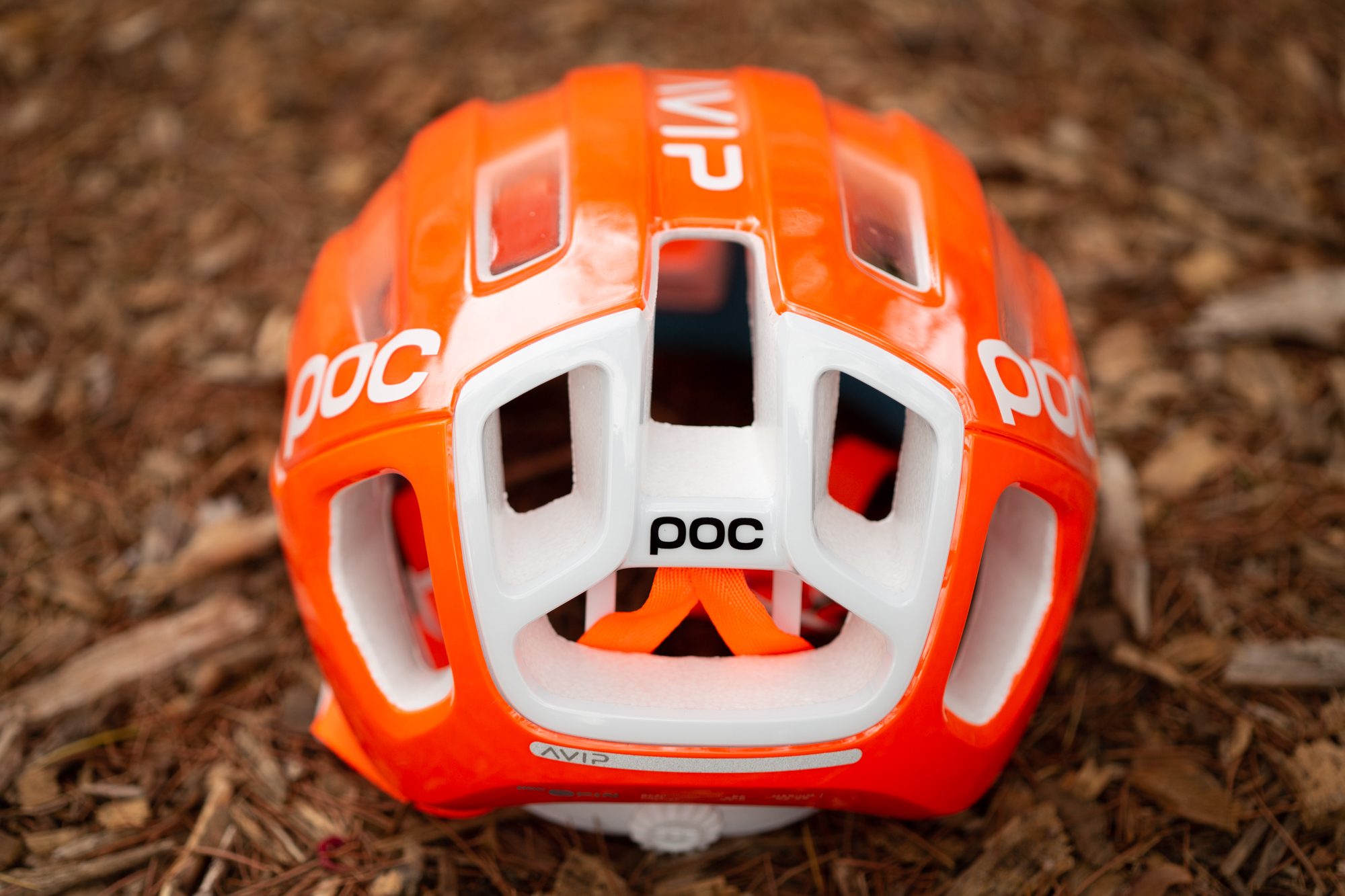
Ride experience
We are early in the season so it's a little bit tricky to test a rain-specific helmet. As it turns out, Portland Oregon heard my need and responded with light rain right when I needed to test. Instead of hard rain, it sprinkled on and off, providing an excellent opportunity to test not only the worst weather but also cool but dry weather.
What I found is that despite a completely closed front and upper section, the amount of air that flows through is significant. With temperatures in the 60F/15C degree range, it would be easy to overheat but it was never an issue. Leaving the house, I mostly forgot there was anything special about the helmet I was wearing. After a few miles, I spent time trying to figure out how it was remaining so cool and well ventilated. It's not immediately obvious while wearing the helmet where the air is coming from.
Understanding how the airflow works requires a bit of off-the-bike investigation. The three large frontal vents mentioned earlier are hard to find while wearing the helmet, but easy to see with it removed. As the air hits your face, or glasses, it flows up and through the helmet. The extensive rear venting also helps by creating a low-pressure area that works to pull the air out of the helmet.
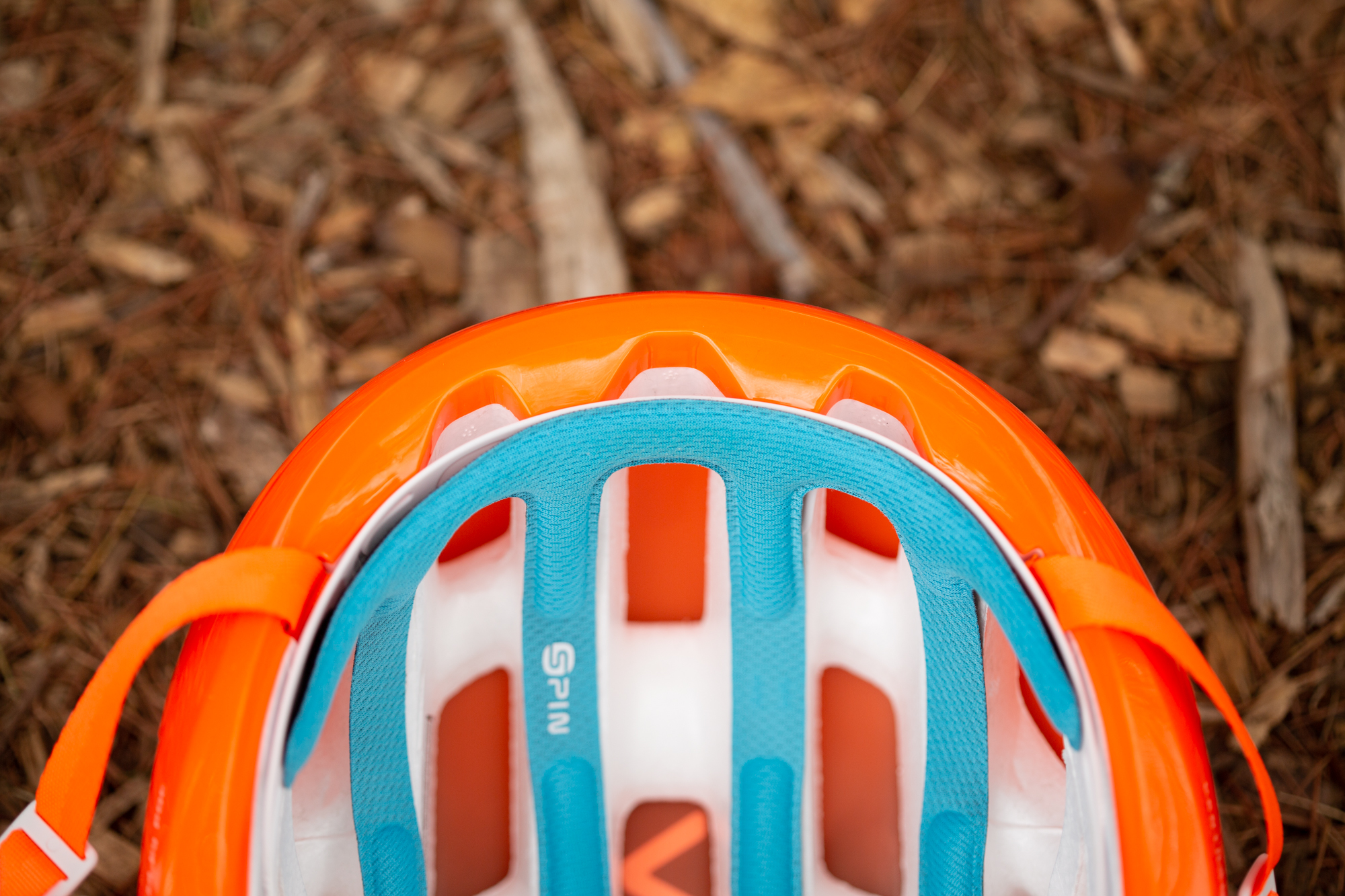
As the rain picked up, I moved to dirt roads, and this is where one of the biggest advantages made itself clear. On-road or off, riding in heavy rain can leave a helmet filthy. The helmets I tend to use most in the rain have dirt and mud in every little nook and cranny. Having a smooth, glossy, shell makes clean-up after a rainy ride much easier.
Beyond being a wet weather barrier, the POC Ventral Tempus Spin is still a helmet, and POC nails the basics too. The strap system is a high point, with an anchor point at each temple and a single piece of webbing that connects between each anchor. Below each ear, there is a piece of plastic that serves as an alignment point for the under-chin strap. These plastic guides are moveable if you need to bring the chin strap forward or backward.
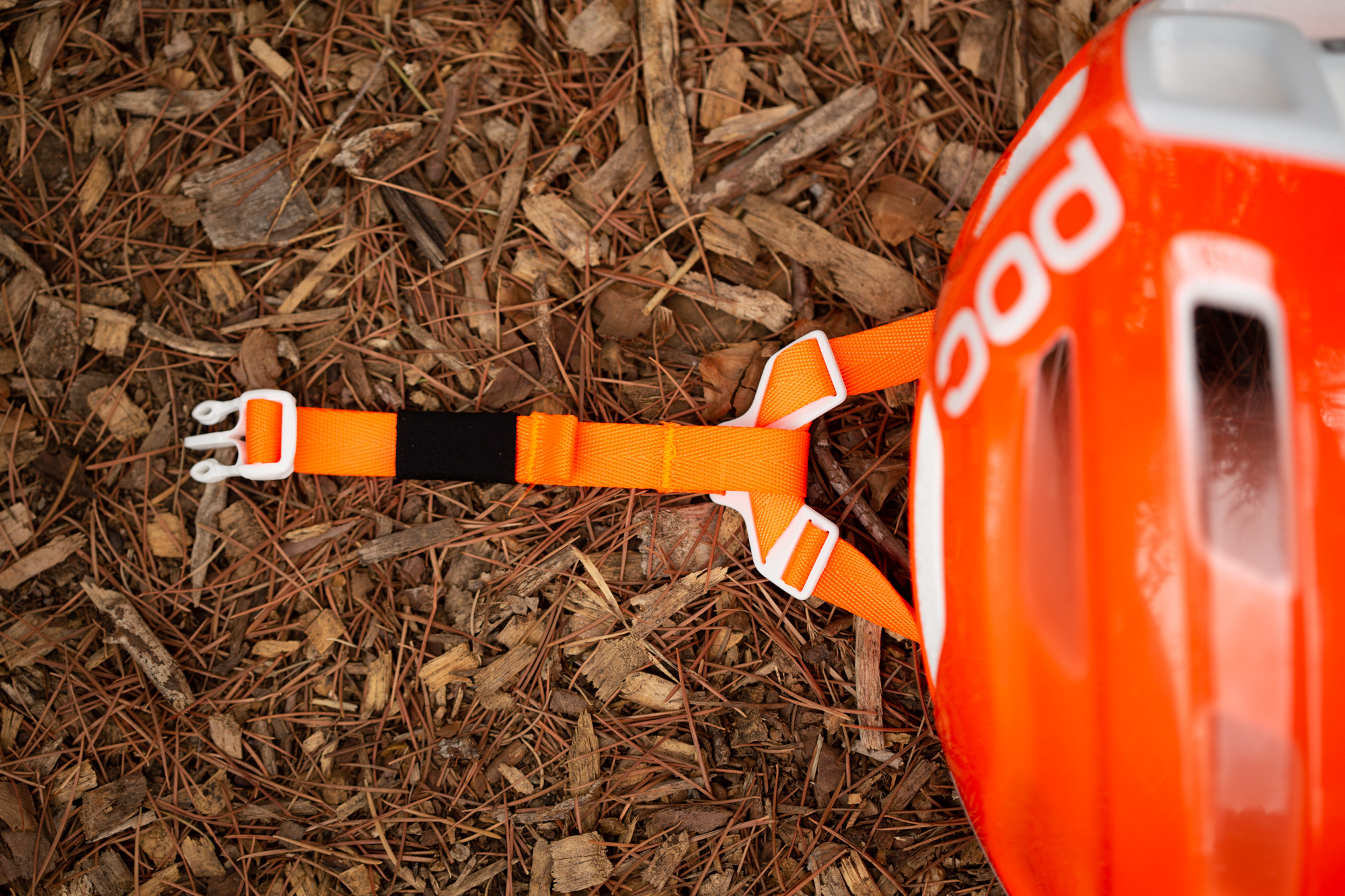
The design highlights the need for correct helmet placement and makes it easy. A helmet should be low on the forehead, not tilted backwards. The POC strap system puts the helmet right where it should be from the beginning, but it's also easy to make small adjustments if you need to. The only necessary movement is forward or backward on each side which is a one-step process. You'll never find yourself hopelessly lost with the adjustments.
The quality strap system is just one aspect of the comfortable fit. There are lighter helmets out there but the Ventral Tempus Spin feels light on your head. Venting behind the front pads keeps overall temperatures down but it also does a good job keeping those forehead pads dry. The Spin system is an excellent way of providing rotational protection in an unobtrusive way. Consider it just a good, comfortable helmet with a bit of extra specificity.
Verdict
Yes, this helmet comes to market because of a specific rule in UCI-governed races. There are many people who are going to say that doesn't apply to them. Not only that but there are other options that stop short of a completely different helmet for the rain. If daily long-distance rides in the rain aren't something you deal with, this solution might not make sense to you, but if you ride in the rain a lot you are going to have a different understanding.
People who ride in the rain a lot might already have a second helmet, so it only makes sense to have that second helmet be specifically designed for the task at hand. There's no complicated system of venting to weigh the Tempus down, and there are no extra pieces to store or potentially lose. It's a specific design but if it fits your needs, you'll be glad it exists.
Tech Specs: POC Ventral Tempus Spin
- Colour: Fluorescent Orange
- Rotational Impact System: POC Spin (Shearing Pad INside), patent-pending silicone pad technology
- Weight: 311g as measured in size M
- Size availability: S, M, L
- Price: £230 / $260
Josh hails from the Pacific Northwest of the United States but would prefer riding through the desert than the rain. He will happily talk for hours about the minutiae of cycling tech but also has an understanding that most people just want things to work. He is a road cyclist at heart and doesn't care much if those roads are paved, dirt, or digital. Although he rarely races, if you ask him to ride from sunrise to sunset the answer will be yes. Height: 5'9" Weight: 140 lb. Rides: Salsa Warbird, Cannondale CAAD9, Enve Melee, Look 795 Blade RS, Priority Continuum Onyx
